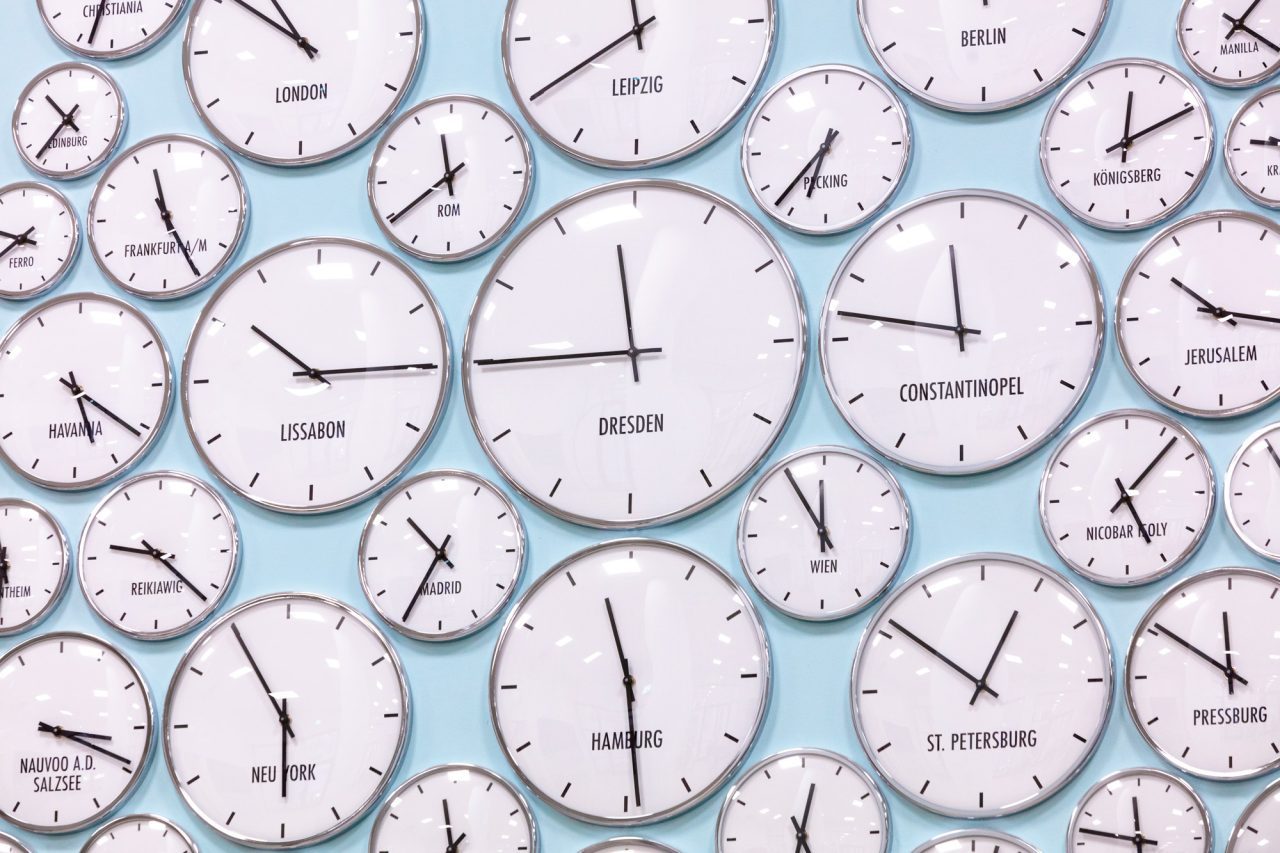TIME MACHINE
2020 · glazed wall clocks
Foyer Workshops / Berlin Exhibition, 1st floor
permanent
{{ time.start_TS | TS2dateFormat('MMM') }}
{{ time.start_TS | TS2dateFormat('YYYY') }}
| Admission free |
| No language skills required |
| Accessible for wheelchairs |
66 clocks in different sizes, hanging close together display time in Neu York, St. Melina, Dresden and many other cities in Germany and other parts of the world. The assemblage in the foyer on the 1st floor is surprising, not only due to the apparently random order of the timepieces but also in the way it draws attention to the unusual selection of cities and their different times.
This is where Stefan Sous picks up the illustration Die Weltuhr (The World Clock) by Ed Lissner. This probably originated in the period from 1850 to 1875 and is published in an edition of the Atlas zu Alexander von Humboldts Kosmos (which, admittedly, was not authorised by von Humboldt). Sous’ work conveys a direct expression of the lack of standardisation in the world at that time. Right up until the 19th century every place determined the time according to the position of the sun. Valid regional standard times developed only gradually. In 1884, time zones were finally introduced with the Greenwich meridian. The standardisation and structure of the world that continues to be valid today came from a western perspective that reflected the conditions of a world that was divided into colonies. Of the 25 nations represented at the conference in Washington D.C., ten European countries and eleven states from North and South America took part. Of the Asian nations, only Japan was included; Africa was not represented at all.
The jury awarded first prize to this contribution: “The installation draws attention to a frequently overlooked driving force of modernisation: the standardisation of spatial and temporal units of measurement worldwide. When reading the local times, the different perspective of the 19th century is striking. Fringe locations are positioned in the centre rather than the central locations of today. This fact and the working of the clocks themselves creates a great dynamic. This time machine bears within it both an historically serious aspect and playful, friendly components. The installation is presented flush with the wall, becoming part of the architecture. The colour of the wall derives from the historical illustration.”
BBR-WB Art in Architecture, Humboldt Forum im Berliner Schloss, foyer wall 1st floor – extract from the written assessment of the prize committee, dated 7 August 2018.
